03-06-2025 | SV Microwave | Industrial
A 'Board-to-Board' RF connection conveys an RF Signal between two parallel RF printed circuit boards using RF connectors. SV Microwave uses connectors with SMP, SMPM, and SMPS series for this configuration, which generally consists of two PCB surface-mount male connectors and a female-female adapter, or 'bullet'.
The basics:
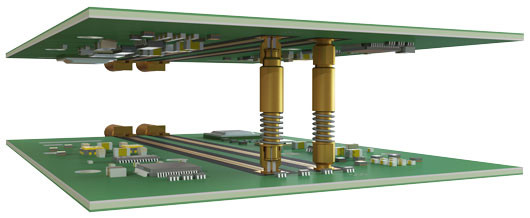
Misalignment
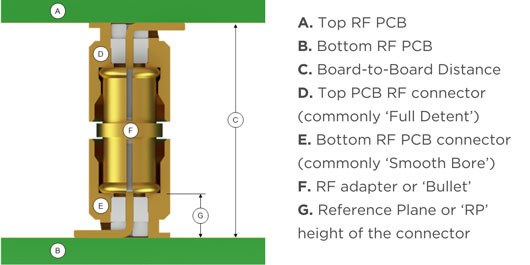
Board-to-board connection breakdown
This connection transfers the signal between PCBs while sacrificing a minimum amount of RF power and getting the best VSWR/Return and Insertion Loss possible. To achieve this, radial and axial misalignment must be kept within tolerance.
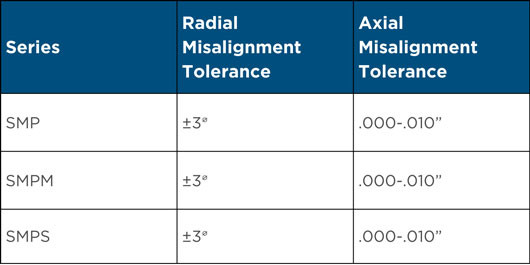
Chart of misalignment tolerances by series
Radial misalignment of board-to-board connectors is best calculated as the angle of the centre of the bullet relative to the PCB connector rather than an X-Y position. Therefore, the longer the bullet, the larger the X-Y position offset allowed.
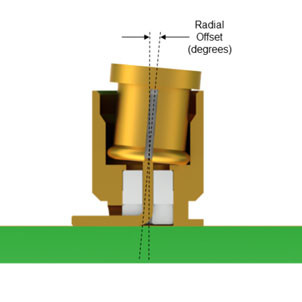
Radial misalignment measurement
Axial misalignment is the distance between the reference plane and the closest point of the bullet.
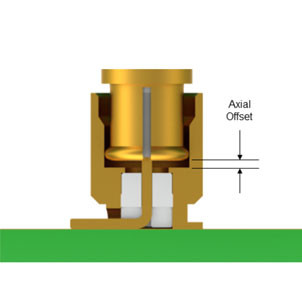
Axial Offset
A tolerance stack-up analysis is essential for selecting an accurate board-to-board connector for your application, as connectors are designed to operate within acceptable axial and radial misalignment levels. If the system tolerance is within these levels, electrical performance will be within rated specifications. If it is outside these levels, you may experience significant power loss.
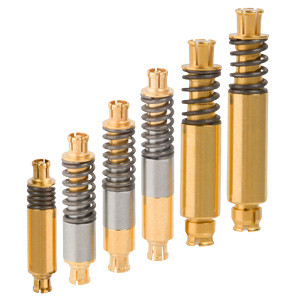
Spring bullet line
For systems with more considerable axial misalignment, designers may want to choose spring bullets to help absorb some of the misalignment. These board-to-board connectors axially compress while maintaining a near-constant geometry for signal transmission, allowing for a larger tolerance range.
SV has a wide variety of spring bullets, including SMPS, SMP, and SMPM interfaces designed for repeatable VSWR profiles across the entire range of compression. This is critical in applications where the compressed length can vary due to tolerance stack-up at final integration, ensuring solid, consistent mating.
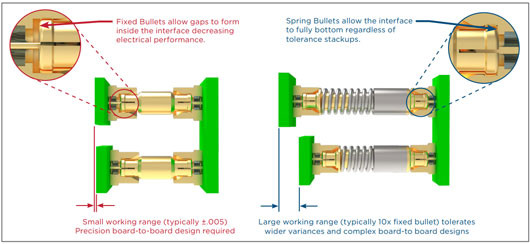
Fixed bullets vs spring bullets
For systems with less axial misalignment, fixed bullets are ideal. They have a smaller working range than spring bullets but are typically less expensive and have a lower insertion loss. SV’s SMP and SMPM fixed bullet line comes in a variety of lengths. As system designs get more complex, the necessity for high-density small form-factor board-to-board connectors increases. That’s why the company's bullets begin at a nominal length of 0.265" (SMP) and 0.188" (SMPM).
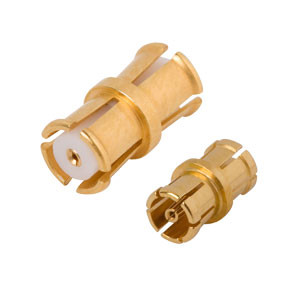
Fixed bullet line
Multi-mating board-to-board interconnects
Fixed and spring bullets can be useful in applications where multiple board-to-board interconnects must mate simultaneously. However, for the bullet to mate successfully without crashing, the loose end of the bullet must be within the acceptable tolerance range.
The company recommends using full-detent connectors on the PCB where the bullets need to be retained. On the opposite connector, a smooth bore option is suitable if the bullets are well-constrained.
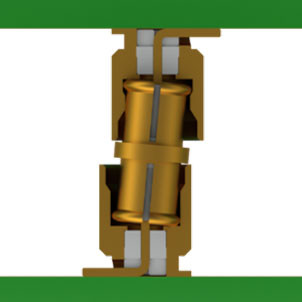
Typical board-to-board connection with full detent (top) and smooth bore (bottom) PCB connectors
When multi-mating board-to-board connectors, consider the insertion/withdrawal force required and the minimum centre-to-centre spacing requirements. While this is not an issue with full detent connectors, as they will be individually mated, the smooth bore connector will experience the combined mating force of all the connectors, which could potentially lead to a warped or damaged PCB board when mated without proper board stiffeners.
